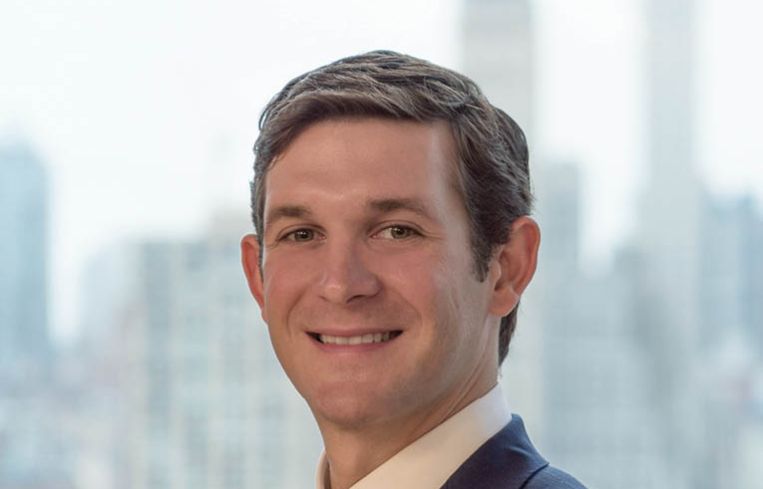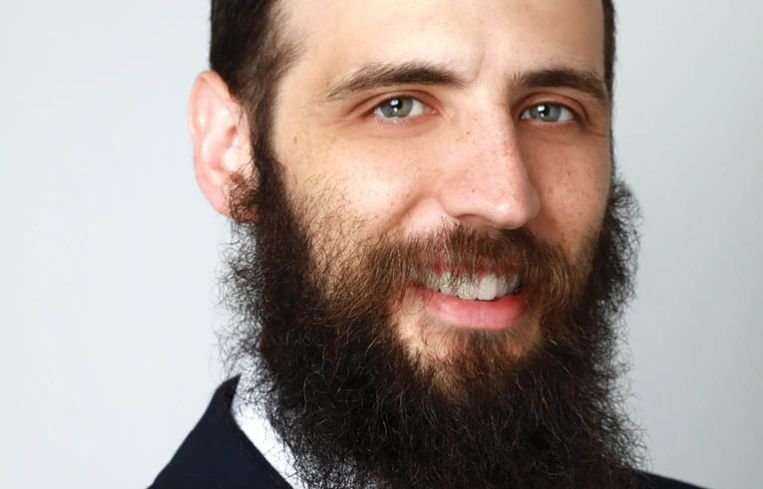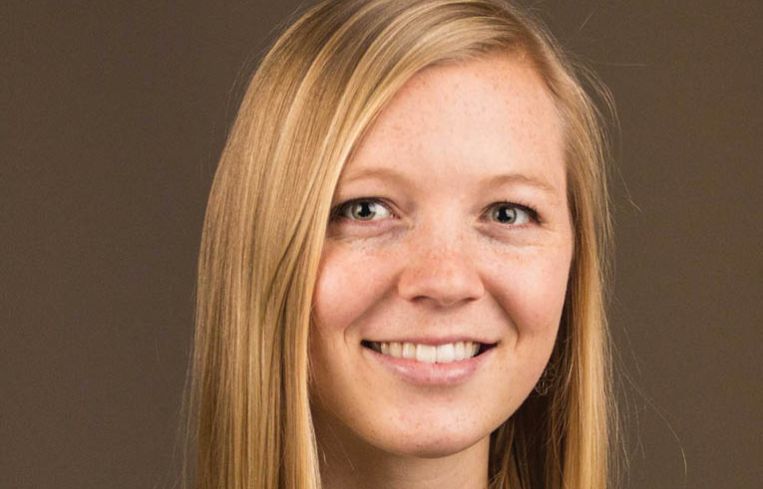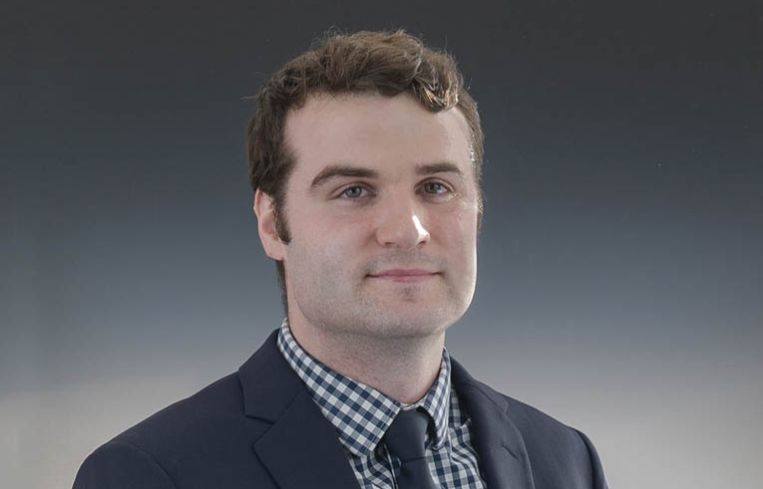CO’s 20 Under 35: The Top Young Architects, Engineers and Contractors of 2019
By The Editors October 1, 2019 9:00 am
reprints




















Choosing the candidates for Commercial Observer’s lists of top young professionals is always a challenge, and this year was no exception. For our list of the best 20 architects, engineers and contractors under 35, we ended up selecting folks who worked on some of New York City’s biggest and most ambitious developments, like Hudson Yards and Greenpoint Landing, as well as environmentally conscious initiatives like building bioswales for stormwater management and reducing the carbon footprint of large buildings.
And we tried to include as broad a swath of the industry as we could, whether it’s architects that design corporate interiors, engineers that build proton therapy centers, or construction pros that reconstruct historic theaters. Ultimately, the honorees’ accomplishments speak for themselves. Read on to learn more about the AEC industry’s best and brightest.—Rebecca Baird-Remba
John E. Anderson III, 32
Project Manager, Gilbane Building Company
Making a lasting mark on a city is an exclusive job perk for people in real estate and construction. John Anderson is enjoying that perk now, as he’s working on the construction of the 58-story, 1,011-foot-tall 50 Hudson Yards which, when completed in 2022, will be the fourth largest commercial office tower in the city.
“It’s incredible working on a project that’s changing the Manhattan skyline,” said Anderson.
As the lead Gilbane representative on the project, Anderson oversees scheduling, cost controls and deadlines, coordinating the multifarious elements that go into a building of this complexity.
Anderson, who graduated Brown University with a B.A. in economics in 2011, is a rare sixth-generation real estate legacy. His great-grandfather, William Gilbane, founded the company in 1873. While his parents looked to other industries, he grew up in a close-knit family in Rhode Island where aunts, uncles and cousins, many in the family business, lived on the same street.
“We’re a very, very close family,” he said. “Real estate has been around me forever.”
When not working, Anderson contributes to the ACE Mentor Program, helping inspire high school students to consider careers in design and construction.
He is also a member of the Gilbane Leadership Development Program, which prepares younger company employees for future leadership positions.
For now, though, his main focus is on 50 Hudson Yards, and helping create a building that will permanently alter the look of New York City.
“Building at Hudson Yards, you feel like you’re building a city within a city,” he said. “It’s truly a remarkable place, and I’m very proud to be a part of it.”—Larry Getlen
Jordan Bargas, 29
Vice President, Related Companies
After a two-year stint on the investment sales team at Eastdil Secured, Jordan Bargas has spent the past four years handling the financing and construction of 55 Hudson Yards. His job touches every aspect of putting up a building, from design to leasing to construction. Together with Stephen Winter, he helped nail down leases for Stone Peak Partners, Third Point, Engineers Gate, and Cognizant at 55 Hudson Yards. He managed the construction budget, attended weekly meeting with the construction team, and keeps in regular contact with 55 Hudson Yards’ investors, Mitsui Fudosan.
Although he came into the job with no development experience, Bargas said working at Related has been a crash course in all aspects of financing, constructing and operating a building.
“We’d attend these development meetings and it was like someone was speaking a different language when they’d get into the technical aspects,” he said. “Working alongside all these different people in-house helped me ask all the stupid questions and get comfortable walking in that world. It was like drinking from a fire hose early on but having people to bounce ideas off of contributes to the success of all these developments.”
Growing up in Miami, he was immersed in real estate because his grandfather was a developer and his dad was a mortgage broker.
“I was always surrounded by it from an early age. You know, dinner chat,” Bargas explained. “And when the opportunity came, I was like, ‘100 percent, let’s do this.’ ”—R.B.R.
Martina Botturi, 34
Electrical Engineer and Associate Principal, BR+A
In a world where having a unique specialty can get you far, BR+A’s Martina Botturi picked a doozy. Botturi specializes in the design of centers for proton therapy, a form of cancer therapy that directly targets tumors without disrupting neighboring cells, and which requires massive, space-intensive equipment.
“Proton therapy is the most advanced type of radiation treatment, using a high-energy beam to treat cancer,” she explained. “It’s a very advanced type of radiation, but in order to deliver it, [it requires] an 80-ton piece of equipment about 250 feet wide.”
Botturi has an architecture degree and a master’s in construction engineering from the University of Rome. She’s been working on these centers since joining BR+A in 2012. Her work includes the New York Proton Center, the only proton treatment facility in New York State, plus centers in Singapore, Bangkok, Australia, Abu Dhabi, Cairo, Madrid, and more.
After working as an electrical engineer for three years in Rome post-university, she moved to the states seeking greater opportunities. At BR+A, proton therapy design was a new area that intrigued Botturi greatly.
“I’m very ambitious. I take on challenges,” she said. “When I started with BR+A, they were just getting familiar with these types of projects. Proton therapy design was something new, and something scary for many people. I took it on as a challenge. I was very motivated.”
The unique nature of proton therapy design has led to many challenges for Botturi, as with the design of the Hong Kong Sanatorium Hospital in Happy Valley, Hong Kong.
“It’s a high-rise with a very small footprint, and we had to design the proton facility below grade,” she said. “They had a vertical beam, which is not typical. Usually, the layout of these proton centers is horizontal, but the density in Hong Kong is challenging, so they had a vertical beam. It was interesting having to face those issues, especially while working with an international team and dealing with their regulations.”
Botturi looks forward to progressing in this aspect of design as new methods of particle therapy (proton therapy is one form of particle therapy) are discovered and implemented.
“I definitely want to continue working in something related to the proton business,” she said, “hopefully staying within the design of it, but also being more involved in new technology.”—L.G.
Kevin Davenport, 32
Vice President, Brookfield Properties
Kevin Davenport has made a career out of managing megaprojects. The Houston native studied urban real estate and economics at the University of Pennsylvania and did a stint at Hines before starting at Brookfield in 2012. He was hired to help oversee the development of Manhattan West, the company’s massive mixed-use project across from Penn Station between Ninth and Tenth Avenues. Davenport worked on One Manhattan West, including negotiating a lease with Skadden, and on the construction and financing of the Pendry, the development’s hotel. Two years ago, Brookfield bought into Greenpoint Landing, a 22-acre, 11-building residential project on the north Greenpoint waterfront. Davenport was sent to manage the project soon after. With the original owner, Park Tower Group, Brookfield completed One Blue Slip, a 30-story, 359-unit rental tower, and is working on the construction of a 40-story, 421-unit rental building, Two Blue Slip, which is set to finish in January. Davenport’s team recently broke ground on One Eagle Street, a three-tower, 745-unit apartment building where 30 percent of the units will rent for below-market rates.
Although one development is in Hell’s Kitchen and the other is in North Brooklyn, the two developments are similar in a number of ways, he said.
“Both projects are massive in scale,” said Davenport. “You have to work with a lot of different stakeholders, city and state agencies; it takes a tremendous amount of coordination to pull off that kind of development. It’s really awesome to see it come together as we’re delivering all the components at Manhattan West.”
In his free time, the West Chelsea resident chairs the St. Jude Gold Gala, downhill skis, and takes weekend trips to far-away locales like Hong Kong and Moscow.—R.B.R.
Molly Dee, 28
Head of Deep Carbon Reduction, Jaros Baum & Bolles
When New York City rolled out the new law that requires landlords to reduce the carbon footprints of their buildings, Molly Dee stepped up to the plate to help owners and her fellow engineers at Jaros Baum & Bolles figure out how to implement the policy. The Tucson, Ariz., native helps educate owners, brokers and her peers both within and outside of JB&B on how to approach the dramatic retrofits that the law requires, whether it’s about facade work, new heating and cooling systems, or installing solar panels.
“My overarching responsibility is to make carbon mitigation in the built environment approachable to the people who are most impacted by the legislation,” Dee explained via phone while vacationing at Zion National Park in Utah. “What that means for engineering is doing a deep-dive with a focus on carbon reduction, and that is new to the industry because they’re used to thinking about energy use intensity and getting off steam and onto natural gas because it’s more ‘energy efficient.’”
She noted that part of her job is educating older engineers at JB&B “who have done a certain kind of design for a long time, [I help them] understand that they have to do things differently.” She also wants to help tenants understand how they can design and build out their spaces in a more energy-efficient fashion. She’s trying to talk to brokers too, about what the new laws mean for their investment sales valuation.
When she’s not giving presentations on the new building emissions law, she and her team are working on a study to reduce the carbon footprint of the New York Stock Exchange and overseeing Rudin Management’s energy-efficient retrofits of its commercial properties. In her spare time, Dee, who lives in Jersey City, trains for triathlons. She hopes one day to compete in an Olympic-distance triathlon.—R.B.R.
Victoria Della-Peruta, 28
Virtual Design & Construction Coordinator, Pavarini McGovern
In her year and a half at Pavarini McGovern, Victoria Della-Peruta has worked to integrate advanced modeling technologies into the company’s every project, including one with some remarkable challenges.
Della-Peruta works with projects from the initial RFP stage. “As soon as we find out there’s a project we’re going after, I work with marketing and the field staff to come up with the site logistics, then we do a 3D model and renderings of the actual construction that we submit with our proposal,” Della-Peruta said. “If we get the job, then we do digital coordination. We build the job on the computer before we build it in real life. We make sure everything works, and work through any questions so that during construction, there are fewer issues in the field.”
Della-Peruta is currently working on TSX Broadway, a massive project at 47th and Broadway, which requires the Palace Theatre to be lifted in order to create space for 75,000 square feet of experiential retail, all while ensuring that the landmarked, historic theater remains intact.
“We have to work with landmarks and with the theater to make sure everything we’re doing doesn’t disrupt it,” she said. “While we’re doing this, we’re dealing with ongoing changes to make sure the project meets all the standards. We’re working through really tight mechanical spaces trying to fit everything, some of the smallest mechanical spaces I’ve seen. It’s very difficult.”
Della-Peruta embraces the challenges of her job and how technology is contributing to it and looks forward to continuing to help bring this sort of design into new technological territories.
“I want this [technology] to be a bigger part of our company, and construction in general,” she said. “I want people to embrace the new technology coming out and realize how beneficial it could be. [The industry is] starting to really embrace new technologies, and I’d like to see that continue.”—L.G.
Amy DeLuca, 33
Project Manager and Studio Lead, CANY
After nine years with CANY, Amy DeLuca takes great joy from the restoration of old New York buildings, an aspect of architecture and design that initially caught her by surprise.
“I studied architecture in college and [graduated] in the recession, so I was looking for anything I could do,” said DeLuca, who has a B.S. and an M.S. in architecture from The Catholic University of America. “I fell into the exterior restoration world by accident and fell in love with it. I didn’t even know this was a niche that was possible in school. I was more on the straight track of doing interiors and designing new buildings. I didn’t know there was a lot of work in restoring existing buildings.”
DeLuca’s past projects include 183 Madison, which had her working on deconstructing and rebuilding parts of the building’s cast iron storefront, and 220 West 42nd Street, which required the replacement of much of its facade.
Her current projects include facade replacements for 125 Park Avenue and 110 East 42nd Street.
“125 had challenges in that it had a lot of intricate terra cotta,” she said. “It’s tri-colored, so in the past few weeks we’ve been trying to match the color, and we’ve gone through like 15 patching samples. You get to lend an artist’s eye to what’s usually more construction-related work. For both of these buildings, it’s about matching the historic finishes. That’s a fun problem to solve.”
Having lucked into a profession that keeps her excited and engaged, DeLuca anticipates delving deeper into historic renovations, and employing her creative eye to help keep New York’s grandest buildings looking majestic and pristine.
“I love old buildings. I love historic preservations,” she said. “I love the excitement of never really knowing what you’re going to see. Some of the buildings we work on have great historic features, and to see them up close and open things up, you see how they were built. Sometimes it makes sense and sometimes it doesn’t. Sometimes you wonder, how did that stay up there for 100 years? It’s pretty cool to be able to see all that up close.”—L.G.
Danny Donev, 31
Senior Project Manager, JLL
Danny Donev, a senior project manager with JLL’s Project and Development Services group, has enjoyed working on a significant piece of New York City iconography — actually, make that the most significant icon.
The 31-year-old has served as the design and construction lead on several renovation projects for JLL within the Empire State Building.
Donev worked on the relocation of the entrance to the building’s famed observatory to East 34th Street, along with the completion of an accompanying lobby, in order to better facilitate the movement of observatory visitors and reduce wait times. The observatory entrance is now closer to its original entrance. Donev also previously worked on the refurbishing of the building’s gift shop.
“This experience has been amazing,” he said. “Working on a project like the observatory renovation gives you a sense of pride because you know the project you’re working on is touching millions of people per year, and you’re leaving something positive behind. Even if it’s just for a moment, you know you’ve made a difference. It’s a thrilling experience.”
For Donev, who graduated from Fairleigh Dickinson University in 2012 with a B.S. in civil engineering, the path to real estate was an unsurprising one, as architecture is something of a family business.
“My dad is an architect and my uncle has an architectural degree, so the real estate world has always been in my family,” he said. “Architectural engineering has always been there for me.”
Donev enjoys the challenges of the job and the exposure to such essential projects for New York City, and looks forward to continuing along on this path.
“This project has been a unique eye opener,” he said. “I see myself staying in the real estate world, moving up the corporate ladder, and contributing to the growth of JLL for years to come.”—L.G.
Mitchell Forman, 31
Project Director, New Line Structures
Working at New Line for six years, Mitchell Forman has overseen the construction of numerous residential projects, including the 405-unit 10 Halletts Point for The Durst Organization and the 750-rental-unit 333 Schermerhorn Street for Steiner NYC. He's also beginning work on the 745-unit Greenpoint Landing Parcel D for Brookfield Properties.
Forman obtained his B.S. in mechanical engineering from the University of Maryland in 2010 and his M.S. in real estate development from NYU in 2017. He spent almost five years at Clark Construction in Bethesda, Md., evolving from an intern to a project engineer on developments including the Montgomery College Bioscience Education Center in Germantown, Md., and 1000 Connecticut Avenue in Washington, D.C.
Forman has similarly risen steadily up the ladder at New Line, joining the company as an assistant project manager in 2013 and rising to be named project director earlier this year.
For the Greenpoint Landing project, he is overseeing the construction of 745 units over three towers, including private and public streets and plazas, as well as the installation of the buildings’ custom precast and glass window system, among many other tasks.
Forman finds himself especially drawn to the problem-solving side of his job, although the permanence of its effect has been a boon for him as well.
“I find it interesting and entrepreneurial,” he said. “You get to see what you’ve been working on physically. In a lot of careers, you don’t get that. However long the building is up, you have something to be proud of, to walk past and remember. That always keeps it interesting.”—L.G.
Julia Grabazs, 28
Senior Architectural Professional, Skidmore, Owings & Merrill
SOM hired Julia Grabazs right out of undergraduate architecture school at Rensselaer Polytechnic Institute and quickly put her to work on designing a new library for Barnard College. She worked on the building, known as the Milstein Center for Teaching and Learning, for two years, from its early design to construction permitting.
“We re-envisioned the role of a library in the 21st century,” Grabazs said. “It’s not only a repository for books but it’s also a place for students and faculty to come together and collaborate.”
For the past year, Grabazs, who grew up in Belchertown, Mass., has been working on a building at Wellesley College, about an hour and a half east of her hometown. She led the design for renovation of Wellesley Science Center, which is an interconnected complex originally constructed in the 1920s and then expanded in the 1970s and the 1990s. The oldest portion of the building is being demolished, and Julia oversaw the renovation of the ‘70s-era wing and the design of a new addition to the building. Currently she is overseeing the design on a lab building in New York City, the name of which she wasn’t permitted to disclose.
She is also heavily involved in SOM’s mentorship programs, supervising interns and mentoring junior staff members.
“The best ideas come from a diverse team that feels comfortable expressing their ideas regardless of experience level, and mentorship is such an important part of that,” Grabazs explained. “I was straight out of school when I worked on the Milstein Center. Regardless of that lack of experience, the whole team mentored me. I felt empowered to participate in the design and [it] really empowered me early in my career.”
When she’s not working, Grabazs, who recently moved to Cobble Hill, Brooklyn, enjoys walking around the city, trying new restaurants and attending art exhibits.—R.B.R.
Michael Kipfer, 31
Principal and Director of Research & Development,
Mancini Duffy
As Mancini Duffy’s R&D director, Michael Kipfer oversaw the 2018 opening of the company’s Design Lab, where he’s leading the effort to integrate technologies such as artificial intelligence, augmented and virtual reality, 3D printing, drones, generative design, and projection mapping into the company’s design process.
To hear him tell it, he’s making thrilling progress. He pointed to new technology the company used for the design of the ground floor programming at Pier 17 as evidence.
“We developed a 360-design process where we’re bringing all the developers, consultants, designers, architects, engineers — everyone together in one room, and we’re designing in real time with different types of scripting programs and VR environments. It brings everyone in coordination with what’s going on with the design so we can make better decisions in a faster, timelier manner.”
This new process, along with much of the lab’s work, revolves around solving longstanding problems in building design, and finding new methods for the most efficient building processes possible.
“When we started this about three years ago, we set off to find out how we could increase production and design, decrease time, and bring designers more to the forefront in the industry,” said Kipfer. “Over the last two years, architecture revenues are at an all-time high, but profits are the same. We started looking for the missing factor, and the ROI to us is decision-making. How can we help clients make better, more informed decisions, and provide them technologies so they can see all the decisions at once, so that we can then get a better design that meets their needs?”
As a project designer and manager at the firm, Kipfer has also spent the past four years working on the 500,000-square-foot Phase V Renovation at the Brooklyn Army Terminal, which has involved converting a 1918 building for modern-day tenants.
In addition to continuing to work such challenging projects, Kipfer looks forward to further advancing industry technology to help increase efficiency in construction.
“Historically, if you look at our design process, we’re still following the same five phase process: pre-design, schematic design, design development, construction documents, and the construction administration,” he said. “The microchip is growing yearly, exponentially, but we’re still doing the same exact thing every day. I want to find ways to disrupt that process and make it better and more engaging for our clients. I think ultimately, that’s going to disrupt the real estate industry as well.”—L.G.
Dale Koch, 34
Associate, Bohler Engineering
Dale Koch, one of the youngest associates at Bohler, is currently working on the design for the redevelopment of the Newsday site in Melville, N.Y., for commercial real estate owner Hartz Mountain Industries. Hartz will be replacing the 414,000-square-foot building with two industrial warehouses totaling over 945,000 square feet.
“It’s a well-known place in Melville. It was … where they printed [Newsday] for 40 years,” said Koch. “We were doing some due-diligence work, helping a few people looking to buy the property, and then I was on the team that purchased the property.”
Koch finds this work fulfilling on several levels, delving into the professional tasks while reveling in a space so integral to Long Island.
“It’s really cool that it was something that literally documented Long Island’s history from the late 60s, early 70s to now, but they closed the newspaper printing [facility] in 2015.”
Now, with new industrial space on the way, Koch enjoys seeing the site transform from a piece of the area’s history to a significant factor in its economic future.
“A lot of these pieces are turning into state-of-the-art industrial facilities that will provide a really big benefit for the community, and help commerce go through Long Island,” he said. “It’s about a million square feet of industrial space, so it’ll have a large impact on the market, and the way we operate on a daily basis.”
Koch came to the company by way of a college internship at Catapano Engineering.
“I interned at Catapano in school because I knew some of the guys who worked there, and I was just doing AutoCAD,” he said. “They were doing a lot of retail and commercial development work on Long Island, and I fell into it and enjoyed it. After college, I switched to Bohler, and we’re involved in a lot of CRE projects on Long Island. It’s been really fun.”
Ten years into his time at Bohler, he’s clearly enjoying both the fascinating projects he gets to work on and the impact he’s having on the surrounding area.
“I hope to continue to grow and contribute to the company, and continue to do great work on Long Island, Westchester, and parts of Connecticut,” he said. “My main goal is to continue to grow our team and do the best job we possibly can for our clients.”—L.G.
John Meko, 31
Director of Engineering, North America, WiredScore
If you’re having trouble getting a cell phone signal, John Meko is the guy you want to know. His first post-college job was working with AT&T’s Network Disaster Recovery Team, restoring voice and data service after catastrophic events such as floods. From there he jumped to TW telecom, which serviced a number of buildings in the Financial District. “It was a lot of 24-hour days after Hurricane Sandy,” Meko remembered. Verizon, one of TW’s main competitors, “basically abandoned their network,” so his firm took advantage of the void, “getting really aggressive running our fiber up onto tenant floors.”
It was, however, still chaos Downtown.
“We had a generator on a trailer on Broad Street which kept getting hit by salvage and fuel trucks,” he recalled, “and we had to replace it … four times. It was the Wild West down there.”
Battle-hardened by the storm, Meko is now the director of engineering for North America for WiredScore, a company that began by offering certifications that a building’s digital infrastructure was up-to-date. “We look at it as a mission-critical certificate,” Meko notes. “If you’re in a building without connectivity, people can’t work.”
The firm has since certified half a billion square feet of office space in six countries. New York-certified buildings include all of Industry City, One Manhattan West, and all of SL Green’s portfolio, Meko said.
His job has also grown as WiredScore has morphed from a pure certifier to a technology consultant. “Technology is changing faster than buildings can keep up with it,” Meko notes. One example: The challenges of 5G, new cellular technology that promises to be faster — if and when it works. It’s Meko’s job to find the signal amid the noise. As he put it, “We help building owners understand the infrastructure they need to design to make sure that their buildings aren’t obsolete in three years time.”—Alison Rogers
Eli Meltzer, 34
President, Meltzer/Mandl Architects, P.C.
Growing up with an architect for a dad, it wasn’t too hard for Eli Meltzer to pick his profession. “In high school I used to do renderings for [my dad], using Form-Z, [which was] then the latest in architectural software, as a summer job,” noted Meltzer of his father, Marvin.
But it was still a few years post-school (Dartmouth for undergrad and New Jersey Institute of Technology for his master’s) before he joined the family business, which focuses on housing. (Meltzer/Mandl has designed about 12,000 units since the firm’s founding in 1995; founding partner David Mandl passed away about a decade ago).
The younger Meltzer first worked for KPF on 55 Hudson Yards. “There were four of us on the team,” he said, “when I came in, it was in schematics; we did scale models. At KPF they do a lot of iterations. I stayed on through design [and] development ... I got to sort of touch everything on that building.”
The next stop was Kliment Halsband Architects, which gave him the opportunity to work on a hospital project, and also to be lead designer and project manager of a $44.7 million project for the Blind Brook elementary and high schools in Westchester. So, by the time he came to Meltzer/Mandl — back home to housing, if you will — Eli was 33, with six years of broad experience.
Meltzer said that the firm’s affordable housing and market-rate housing practices inform each other. “I think there’s a consistency to our work,” he said
Do father and son fight, as partners often do?
“Of course,” Meltzer said. “But my dad has one rule: No fights over dinner.”—A.R.
Katie Miller, 27
Project Manager, Dewberry Engineers
Growing up in the southern California beach town of Ventura, Katie Miller got a front-row seat to her parents’ careers as water treatment engineers for the military. Her father did water treatment for the Navy, and Miller made labels for the remediation wells her mother dug to treat groundwater for the Army. So, it’s only natural that she grew up to be a civil engineer who handles water, designing infrastructure that helps New York City absorb excess rain water rather than dumping it into the sewer system and ultimately, into local rivers.
She oversees the design and installation of bioswales, which are essentially rain gardens, and infiltration basins, which are depressions in the street or soil that direct storm water to soil that will absorb it. Her team at Dewberry Engineers recently worked with the city’s Department of Environmental Protection to install bioswales and other storm water management measures across 1,600 acres in Flushing, Queens, and on 600 acres in Crown Heights and Prospect Lefferts Gardens in Brooklyn.
“I’m just drawn to and passionate about the environment and any way I can preserve it,” Miller explained. “Water quality and the challenges New York City has to deal with in managing its water are big issues.”
Before taking her current job at Dewberry Engineers, Miller picked up dual bachelor’s degrees in environmental engineering and political science at the University of California, Berkeley, and a master’s degree in environmental engineering from Stanford.
Although she grew up playing volleyball, these days the Morningside Heights resident is a distance runner; she’s run marathons in Berlin, Chicago and Los Angeles and is training for her second New York Marathon in November.—R.B.R.
Sean Kenneth Morris, 31
Project Manager, Holt Construction Corp.
The aftermath of the Great Recession was a tough environment to graduate into. But for Sean Morris, who had painted houses as a summer job, a bit of hustle blazed a career path.
“There was a guy I used to caddy for, and I said, ‘I need an internship, do you have any openings?’ ” recalled Morris. It turns out that the golfer did, at Holt Construction Corp. Subsequently Morris, whose college degree was in marketing, was hired full time to do administrative work. One day, “I raised my hand and said, ‘I’d like to get more involved,’ ” he said. “My company does a good job if people are hungry for opportunity; they’ll give it to you — they match you with the right mentors.”
Now a full-blown project manager, Morris has been working on the expansion of Simon Property Group’s Woodbury Commons Premium Outlets, a well-known regional shopping center, for 15 months.
In that time his team has demolished, removed, and rebuilt the Woodbury entrance sign; turned one Neiman Marcus store into four stores and a storage unit; built three new kiosks; and demolished what had been left of Woodbury’s former food court while adding five new stores and a public restroom. “We [also] did an addition to the existing Gucci building so they could have more storage,” Morris said. At Michael Kors, a $6 million project has involved a complete knockdown of the entire store, with Holt building a new, state-of-the-art 12,000-square-foot space.
If that sounds like a lot to juggle, it is. The secret, Morris said, is organization.
“I have a work phone and a personal phone. When I’m out in the field, I use voice-to-text to send myself notes, and I email myself to-do lists with high flags. Sometimes it looks like controlled chaos, but it keeps me on top of things.”—A.R.
Anja Pavlin, 34
Architectural Designer, Fogarty Finger Architecture
Anja Pavlin grew up Ljubljana, the capital of Slovenia, and completed her undergraduate work in architecture at the University of Ljubljana before moving to New York City. After earning her master’s in architecture from Pratt Institute in Brooklyn in 2013, she spent three years designing commercial developments at Dumbo-based Leeser Architecture.
Since joining Fogarty Finger in 2016, she has focused on residential interiors. She recently finished work on The Lively, an 18-story mixed-use project in Jersey City’s Powerhouse Arts District. The building is unique because it has two lobbies — one for residential tenants and a second for Nimbus Dance Works, a dance company that will operate a black box theater in the building. The theater’s lobby features “artsy, raw materials, concrete and plywood floors,” Pavlin said. The residential lobby has higher-end finishes, including wood veneers and a stone reception desk. The top floor of the building has a slew of amenities, including a demonstration kitchen, roof deck, pool, grills, and interior and exterior fireplaces.
Pavlin, who lived in Jersey City until recently, is also handling interiors for a 57-story, 750-unit rental tower in downtown Jersey City at 25 Christopher Columbus Drive. As residential development explodes in downtown Jersey City, builders keep upping the ante for amenities: 25 Christopher Columbus will include a demonstration kitchen, golf room, karaoke room, pet spa, communal terrace, and an extensive fitness center that includes rooms for spin and yoga classes.
Moving further north, she also recently collaborated on the design for a 23-story ground-up condominium at 41-05 29th Street in Long Island City.
“Because it’s a condominium, the level of finishes is different,” Pavlin explained. “You can create a different interior program, a different palette.”
When she first moved to Jersey City in 2013, it was “more or less empty” she said. “most of these projects were not built. So, I was able to experience all of that boom.” She recently moved to Harrison, N.J., because it was both more affordable and “less intense.”—R.B.R.
Candace Rimes, 32
Associate, Fogarty Finger Architecture
Candace Rimes is a storyteller whose vocabulary is as likely to include a coffee table that she designed or a wall hanging from a local artisan as it is to include adjectives or adverbs. As an associate at Fogarty Finger Architecture, Rimes has found her niche on the team that creates interiors and amenities for clients like law firms and hedge funds.
In many offices, those spaces come across as cold, stark, and impersonal. Rimes’ specialty is humanizing them, infusing the layers of each project with a touch that fits each client’s spirit.
“It’s a nice niche,” Rimes said, “and our amenities spaces inspire a client’s employees to do their best work.”
To develop a “hand touch,” on any given project, Rimes develops a theme that encompasses each component, ending with “the icing on the cake,” bringing in local artisans for a project’s decorative details. The move to include the local spirit results in spaces Rimes said “feel really human.”
Case in point: Dock 72, in the Brooklyn Navy Yard, where she is leading the Fogarty Finger interior architecture, FFE (furniture, fixtures, and equipment), and art direction teams. To develop a strong unifying story for the clients (who include Boston Properties, Rudin, and major tenant WeWork), Rimes and a colleague walked the site, pored over history books, and met with local artists to embed themselves in the project. The result: “the history of the Navy Yard encompasses the spirit of innovation, and that lives on today,” Rimes said. “That’s a pretty powerful poetic narrative.”
It’s a time-consuming approach, but one that Rimes loves. “We could just buy everything for the interiors and go home at five,” she said, “but instead, we’re pushing ourselves at the end of the day, and that’s what makes me want to come to work.”—A.R.
Joseph Scarinci, 32
Vice President, Project Manager, MKDA
“I’ve always liked building things, and I always liked figuring out how things go together when I was a kid,” said Joe Scarinci, a Mahopac, N.Y., native who started working at a nearby architecture firm, Fuller and D’Angelo Architects, when he was in high school. By the time he finished his bachelor’s in architecture at the New York Institute of Technology, he was working 30 hours a week at the Elmsford, N.Y.-based firm, surveying, drafting and managing smaller projects. He worked on a ground-up specialty high school for architecture and engineering in Stamford, Conn., and on the renovation of Stamford’s Old Town Hall. His father was an electrician who owned his own company and mostly did small residential jobs. The trade “never paid well and was never fun when it was over 100 degrees,” said Scarinci, who initially followed his father into construction by working as a carpenter in his teens and early 20s.
MKDA specializes in corporate interiors for offices, hotels and hospitals. That means Scarinci works on 30 or 40 jobs in the course of six months, rather than spending years on a single project. He said that he appreciates the pace, because he ends up doing something different every day. His job involves managing interiors for several commercial landlords including The Durst Organization, Boston Properties and Vornado Realty Trust. Recently, he completed office buildouts for financial tech firm SS&C Technologies at Durst’s 151 West 42nd Street and for Starwood Realty Trust at Fisher Brothers’ 605 Third Avenue. His team is also renovating the lobby at 299 Park Avenue, another Fisher property, together with Rockwell Group.—R.B.R.
Aaron Patrick Daigle Vinsel, 31
Project Manager, Holt Construction Corp.
Travel on a “Black Card” — an American Express Centurion Card, where eligibility is said to start at a spend of a quarter of a million dollars per year — and you’re likely to experience Aaron Vinsel’s newest project, the Amex JFK Centurion Lounge, a building connected to Terminal 4.
Coming in April, the structure will contain two usable floors, an elevator, and a stairwell, as well as an enclosing glass curtain wall. As befits premium cardholders, “pretty much everything American Express puts into the lounges is fully branded,” Vinsel said. He’s the project manager at Holt Construction, a 100-year-old firm. “AmEx selects their own stones from specific quarries. Everything that gets changed has to go through their branding department.”
That’s where Vinsel’s ability to translate between the design world (which is his training — he has a B.A. in architecture from Rensselaer Polytechnic Institute) to the construction world (which is his experience — he worked on construction framing crews during summers in college) comes in. He calls project management the “connector between those two worlds.”
And he loves them both. Vinsel noted that he was always “fascinated by the job site” and loves the “collaborative” nature of his work. His first chance to shine was a $20 million renovation of two executive floors at Consolidated Edison totaling 60,000 square feet of high-end office space for the executives at the energy company’s Union Square headquarters. The success of the project garnered him a Holt Employee of Excellence award.
He was 27 when the work started. That’s fairly young for a project manager, but “it’s an industry where people look for people with competence,” Vinsel said. “Once they realize that you know what you’re doing, they listen to you.”—A.R.


